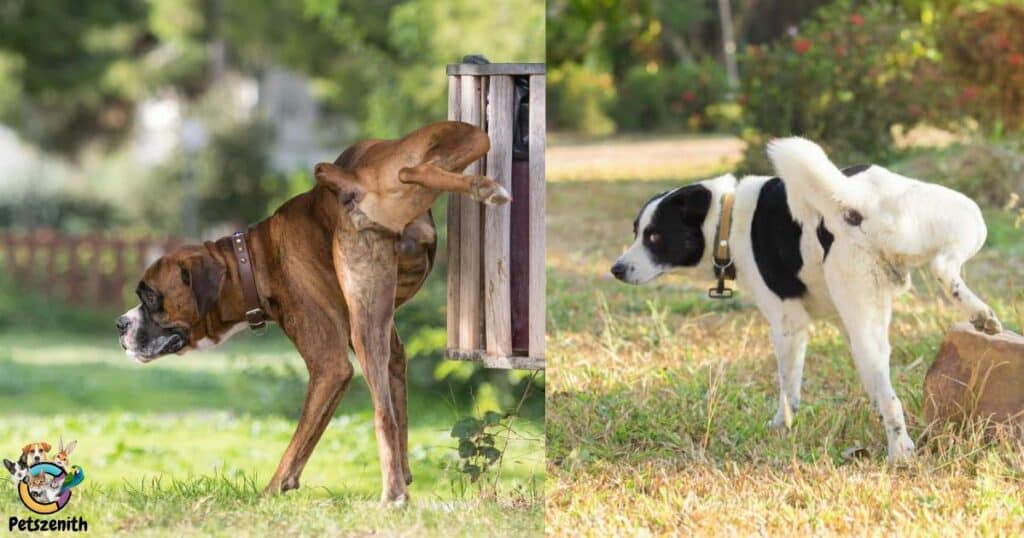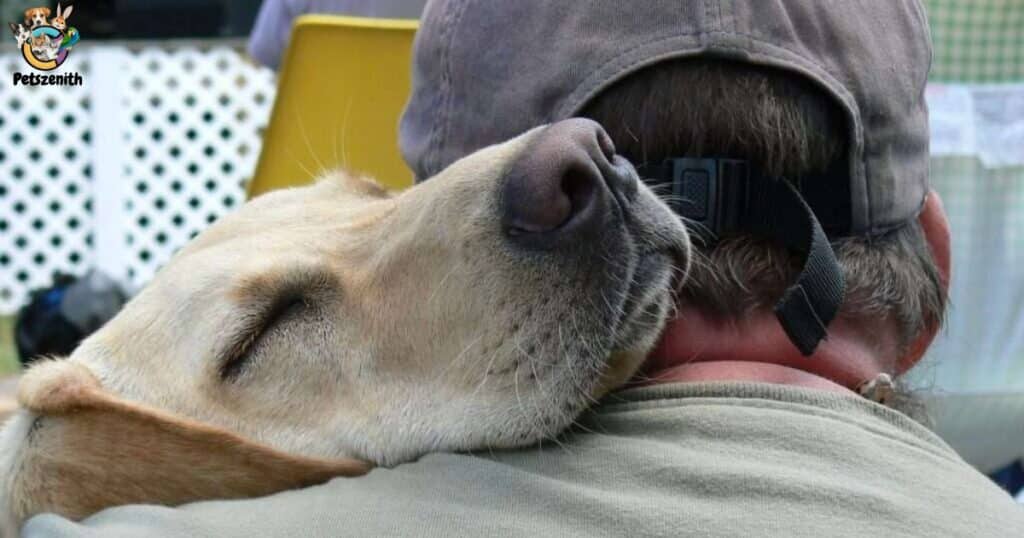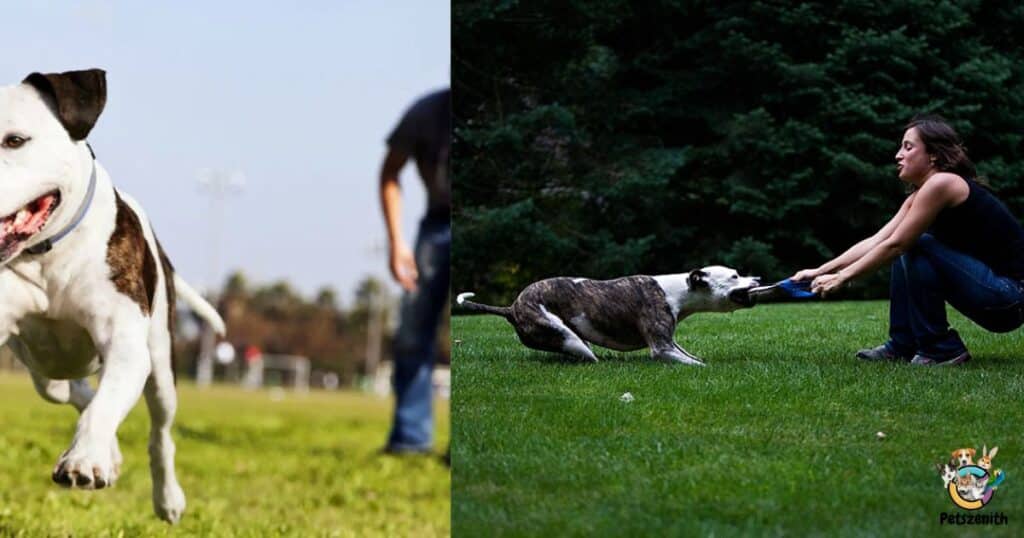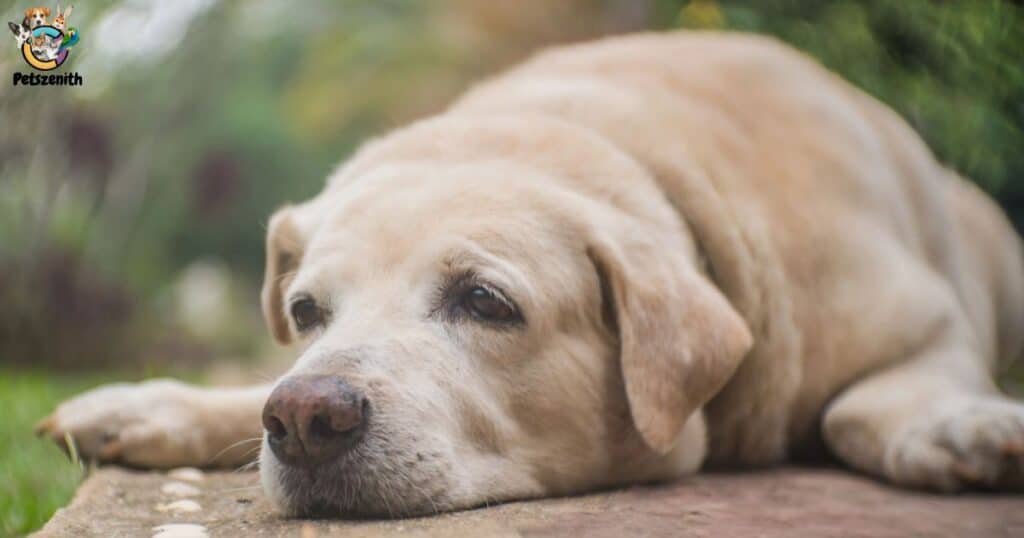There are several reasons for this adorable behavior. Dogs often bury their heads for comfort, seeking solace in your presence. They may also do it to savor your scent, finding reassurance in familiar smells. Empathy plays a role too, as dogs respond to your emotions by seeking closeness. Additionally, it could be a form of territorial marking, showing their bond with you. In colder weather, dogs may bury their heads for warmth, snuggling up to you for comfort. And for dogs with separation anxiety, burying their head is a plea for reassurance.
When your dog buries its head into you, it’s more than just a cute gesture. Why Does My Dog Bury His Head Into Me? 7 Reasons, each revealing a unique aspect of canine affection. Let’s explore these reasons to unravel the mystery behind your dog’s loving gestures.
Setting the tone for understanding canine affection
Setting the tone for understanding canine affection involves recognizing your dog’s gestures. Dogs express love in various ways. They may wag their tails, lick you, or cuddle up. Understanding these behaviors strengthens your bond. Pay attention to your dog’s body language. It’s their way of communicating their feelings. By acknowledging and reciprocating their affection, you create a deeper connection. This mutual understanding fosters a loving relationship between you and your furry friend.
Seeking Comfort
When your dog buries its head into you, it’s seeking comfort. Dogs find solace in the presence of their beloved humans. This behavior is a way for them to feel safe and secure. By burying their head, dogs express their trust and affection towards their owners. Providing a sense of security and reassurance is essential for your furry friend’s well-being. So, embrace these moments of closeness—they strengthen the bond between you and your canine companion.
Savoring Your Scent
Dogs love your scent and find it comforting. They enjoy being close to you because of it. Your scent is familiar and soothing to them. When they bury their heads into you, they’re immersing themselves in your smell. This helps strengthen the bond between you and your furry friend. Your scent makes them feel safe and secure. It’s a way for them to feel connected to you, their beloved owner.
Empathy
Empathy is when someone understands and shares another’s feelings. It’s a deep connection to emotions. Showing empathy builds strong bonds between people. It helps us relate to each other. Dogs are known for their empathy towards humans. They can sense our moods and respond accordingly. Dogs offer comfort and support when we’re sad or upset. Their empathetic behavior strengthens the bond between dogs and their owners.
Territorial Marking

Territorial marking is common among dogs. They do it to establish ownership. Dogs have scent glands in their paws. They leave their scent as a way to communicate. It’s a form of claiming their territory. This behavior is more common in male dogs. They use scent to assert dominance. Territorial marking helps dogs feel secure in their environment. Understanding this behavior can help owners manage it effectively.
Winter Warmth and Cozy Comfort
During colder seasons, dogs seek warmth and comfort. They may snuggle close to you for warmth. Your body and clothing provide insulation against the cold. Burying their head into you becomes a cozy retreat. It’s a natural instinct to preserve body heat. This behavior helps them stay warm and comfortable.
Separation Anxiety
Separation anxiety is a common issue among dogs. It happens when they feel stressed or anxious when left alone. Symptoms may include destructive behavior, excessive barking, or house soiling. Dogs with separation anxiety may also try to escape. It’s important to address this issue with patience and understanding.
Training techniques and gradual desensitization can help ease separation anxiety. Providing toys or treats before leaving can also help keep them occupied. Seeking guidance from a professional trainer or veterinarian is advisable for severe cases.
Recommended Post: Mini Goldendoodle Full Grown: A Full Guide
Is It Common for Dogs to Burrow Their Heads in People?

Dogs burrowing their heads into people is a common behavior. It’s often a sign of affection and comfort. When dogs feel safe and secure, they may nuzzle close to their owners. This action is a way for them to seek warmth and closeness. Dogs have a strong sense of smell and enjoy the familiar scent of their owners. Burrowing their heads can also be a response to their owner’s emotions. Overall, it’s a natural behavior that strengthens the bond between dogs and their human companions.
How to React When Your Dog Buries Its Head Into You
When your dog buries its head into you, it’s seeking comfort and connection. Responding with warmth and affection reinforces your bond. Gently petting or cuddling your dog can provide reassurance. If your dog is anxious, calmly comforting them can help ease their worries. Avoid reacting too strongly, as this may reinforce anxious behavior. Instead, offer gentle encouragement and soothing words. Understanding your dog’s needs strengthens your relationship and fosters trust.
Do Some Breeds Bury Their Head More Than Others?
Some dog breeds bury their heads more than others. This behavior can vary depending on breed characteristics. Breeds with strong instincts for nesting or burrowing may do it more. For example, Terriers are known for digging and burrowing behaviors.
Similarly, breeds like Dachshunds and Beagles may exhibit this behavior due to their hunting instincts. However, individual personality and environmental factors also play a role. Understanding your dog’s breed tendencies can help you better interpret their behavior.
Should I Be Worried About My Dog Burying His Head Into Me?
If your dog buries its head into you, there’s usually no need to worry. It’s often a sign of affection and comfort. Dogs do this to feel close to their owners. It’s a way for them to seek reassurance and security. Sometimes, they may bury their head to enjoy your scent.
However, if this behavior becomes excessive or is accompanied by other concerning signs, it’s best to consult a veterinarian. They can help determine if there’s an underlying issue causing your dog’s behavior. Overall, a little head burying is usually nothing to fret about and is just your furry friend showing their love.
Do I Need to Correct This Behavior?
Correcting behavior in dogs is important for a harmonious relationship. Positive reinforcement helps teach desired behaviors. Consistency is key in training your dog. Redirecting unwanted behavior can be effective. Seek professional guidance if needed. Remember, patience and understanding are essential. Your dog looks to you for guidance and support.
Training and Modification

Training and modification refer to the process of teaching and shaping your pet’s behavior to ensure they exhibit desirable conduct. It’s about guiding them to understand what is expected of them in various situations. Positive reinforcement is a fundamental aspect of this process. This method involves rewarding your pet when they demonstrate the desired behavior, which encourages them to repeat it. Rewards can be treats, praise, or toys, depending on what motivates your pet.
Consistency plays a crucial role in effective training. It’s important to establish clear rules and boundaries and consistently enforce them. This helps your pet understand what is acceptable behavior and what is not. Inconsistency can confuse your pet and hinder their progress in learning.
Avoid using punishment-based methods in training. These techniques can create fear and anxiety in your pet, leading to undesirable behaviors and damaging the trust between you and your pet. Instead, focus on positive reinforcement and redirection. Redirecting your pet’s attention away from unwanted behaviors and towards acceptable ones helps them learn more effectively.
If you encounter challenges or behavior issues that you’re unsure how to address, seek professional help. A qualified animal behaviorist or trainer can provide guidance tailored to your pet’s specific needs and circumstances. With patience, consistency, and positive reinforcement, you can successfully train and modify your pet’s behavior. It’s a rewarding journey that strengthens the bond between you and your furry companion while ensuring a harmonious relationship.
FAQs about Why Does My Dog Bury His Head Into Me: 7 Reasons
Is it normal for my dog to bury its head in me?
Yes, it’s quite common and often signifies affection and trust.
Should I be concerned if my dog buries its head in me excessively?
Excessive head burying could indicate underlying anxiety, so it’s essential to observe your dog’s behavior and address any potential concerns.
Can head burying be a sign of aggression?
Typically, no. However, if accompanied by other aggressive behaviors, it’s essential to consult a professional trainer or behaviorist.
How can I discourage my dog from excessive head burying?
Providing alternative comforts and engaging in positive reinforcement training can help redirect this behavior.
Should I let my dog bury its head in me whenever it wants?
While occasional head burying is normal and can strengthen your bond, it’s essential to maintain boundaries and avoid reinforcing anxious behaviors.
Conclusion
“Why Does My Dog Bury His Head Into Me? 7 Reasons” sheds light on the various motivations behind this common canine behavior. Dogs bury their heads into their owners as a way to show affection, seek comfort, and establish a deeper bond. It’s a tactile display of love, often accompanied by a desire for attention and reassurance.
Understanding these reasons empowers dog owners to foster a stronger connection with their furry companions and respond appropriately to their needs. So, the next time your dog buries their head into you, remember the seven reasons discussed here and cherish the special bond you share.

Davin Connor is an experienced author with 3 years in pets writing. Known for concise, informative content, he shares expertise on pet care, behavior, and health through his engaging articles.






